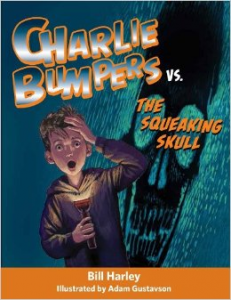Written and illustrated by John Hendrix
Why can’t peace break out spontaneously? Well, apparently, it can. One hundred years ago, during the early days of World War I, soldiers along the trenches in Europe decided to celebrate Christmas with their own special brand of good will toward men – men on the other side of the conflict. By means of a fictional letter from a British soldier, the reader learns of the conditions endured by the men on both sides. Rain, for example, meant three-foot-deep mud that seeped into everything. On Christmas Eve, the British soldiers started hearing singing. Poking their heads up, they could see lighted Christmas trees along the German trenches. Many soldiers crossed into No Man’s Land to shake hands and exchange trinkets with men from the other side. When Christmas was over, the war resumed, but the men were reluctant to shoot at their new friends. Man shot at the stars instead.
The truce really happened. The troops were severely reprimanded for fraternizing with the enemy. And another year of heavy fighting meant that the spontaneity did not carry over to the next year. But third grade readers and above can learn a lot about history, the conditions of war, and international relations from the text. Core concepts are strengthened by this fictionalized account. The realistic and beautiful illustrations enhance the story.
 Title: Shooting at the Stars: The Christmas Truce of 1914
Title: Shooting at the Stars: The Christmas Truce of 1914- Author/Illustrator: John Hendrix
- Publisher: Abrams Books for Young Readers, 2014
- Reviewer: Sue Poduska
- Format: Hardcover, 40 pages
- ISBN: 978-1-4424-9447-3
- Genre: Historical fiction, social studies
- Grade level: 3 to 7
- Extras: author’s note, glossary, index, bibliography


